Saguaros: Living Bouquets of the Sonoran Desert (Photos)

Saguaro Cactus

The saguaro cactus (Cereus giganteus) is the indicator plant of the Sonoran Desert, found in the American Southwest and northwest Mexico. These monarchs of the desert stand as ancient sentinels over this harsh environment known for its extremes of temperature and precipitation. Human beings lived in this region long before the saguaros began to colonize this warm, dry landscape some 10,000 years ago.
Natural Bouquet
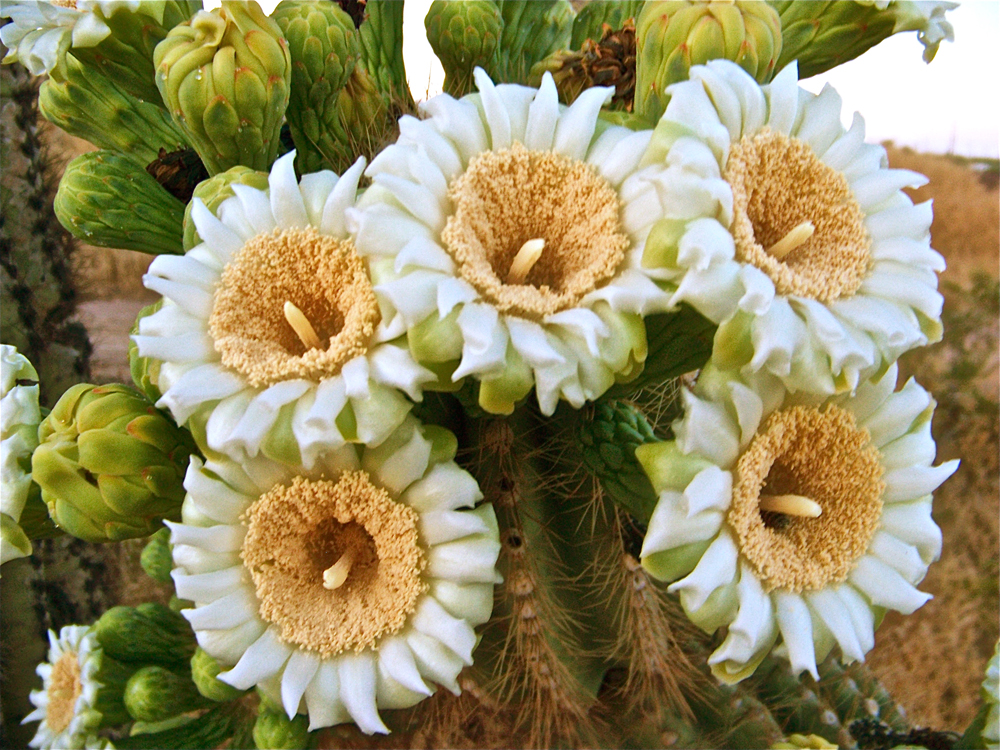
Each April, May and June, these columnar giants bring to the desert landscape an explosion of floral beauty that rivals any flowering season anywhere in the world. And for those American pioneer mothers who first came to this desolate land in the mid-1860s, the saguaro blossoms were always a welcoming celebratory bouquet for any desert Mother's Day celebration.
Short-lived Beauty
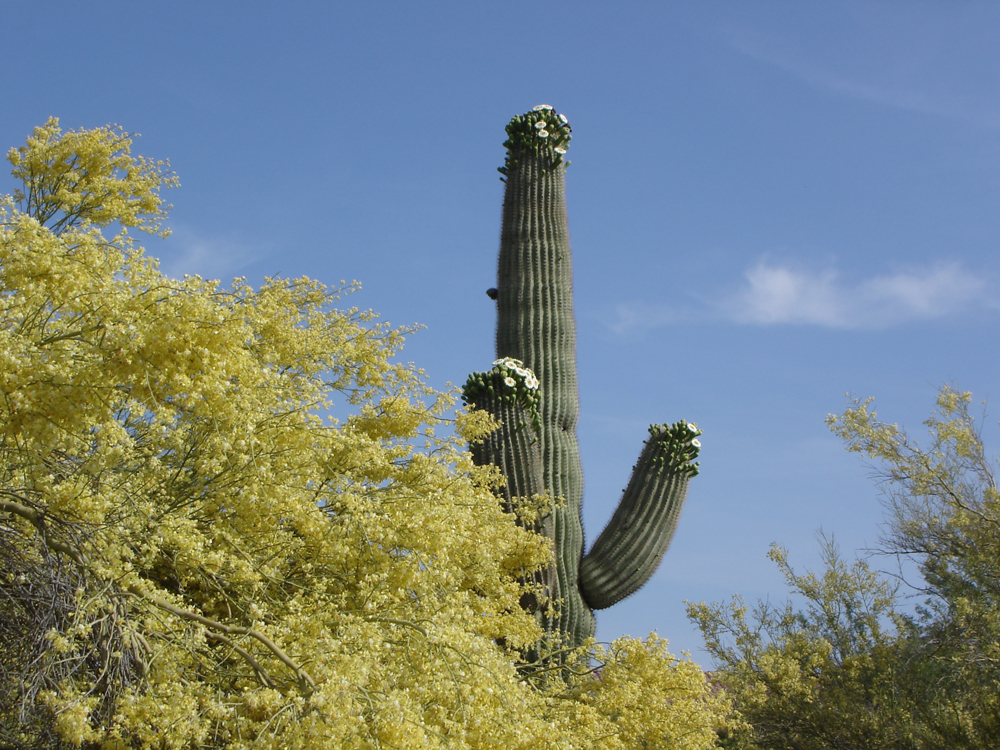
saguaro cactus flower is only in bloom for less than 24 hours. Stimulated by fading sunlight, the flowers begin opening in early evening. The blossom is fully open by midnight only to be closed again by the following noon. Saguaro flowers are self-incompatible and require cross-pollination. Thus the multiple flowers produce a large quantity of pollen so that complete pollination of the blooms can occur.
Flowery Appeal

The average saguaro flower is about 3 inches (8 centimeters) in diameter and is found near the ends of the saguaro's stems and arms. The cream-colored petals with golden stamens and light-yellow pistils make for a spectacular display in this most challenging of desert ecosystems. The saguaro flower has more stamens than any other species of Sonoran Desert cacti flower.
Unique Pollination

A fully mature saguaro will produce an average of 295 flowers each blooming season, which typically runs from April through June. Each flower produces about 265 milligrams of pollen and 543 mg of nectar that has a sugar content of 24 percent. The nectar has a smell similar to overripe melons. The pollen of the saguaro flower is large and heavy, so the flowers cannot be pollinated by the wind. Each flower must be fertilized by the microspores from another saguaro or another arm of the same saguaro. All fertilization occurs within the short blooming time by nectar-feeding bats, birds and insects, especially honeybees.
Pollinators in Action
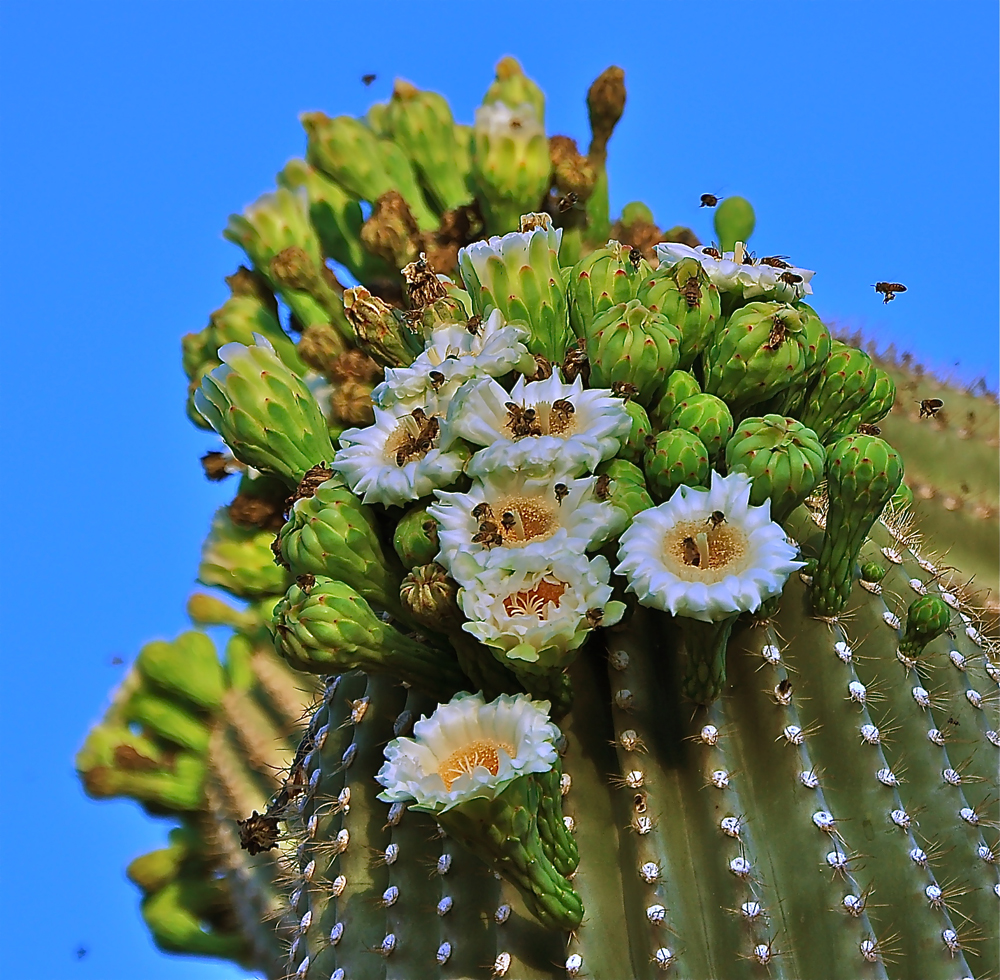
Today, honeybees (Apis mellifera) are the most common pollinators of the saguaro flower as they are the main harvester of saguaro pollen. A typical bee collects an average of 12.2 mg of pollen on each foraging trip and can collect 23.5 pollen loads from each saguaro flower.
Saguaro flowers produce nectar in two waves. The first wave reaches maximum production around 10:00 pm, just in time for the night-feeding bats. The second period of maximum nectar production occurs just before sunrise, just in time for the bees. A group of honeybees can remove all the pollen from a saguaro flower by 10:00 a.m.
From Humble Beginnings

For such giant cacti, the saguaro begins life as a microscopic midget. This picture shows a cluster of 2-week-old saguaros. The two-pointed, fleshy green structures so prominent here are actually the dicotyledons of the saguaro. The microscopic saguaro seedling is a whitish bump that grows from the center point where the dicotyledons join together.
Get the world’s most fascinating discoveries delivered straight to your inbox.
Teen Years

Saguaros grow very slowly. Under normal weather conditions, a 10-year-old saguaro may only reach a height of 8 to 10 inches (20 to 25 cm). These two, 3-foot-high (1 meter) saguaros were planted in February 1988 when they were 6 to 8-inches (15 to 20 cm) tall and as a part of a school project. All young saguaros are very sun sensitive and must grow during their first few years in the shade of another plant, known as a nurse plant. For these two young saguaros, a creosote bush and a Palo Verde tree acted as nurse plants during those early years of their growth.
Signs of Adulthood
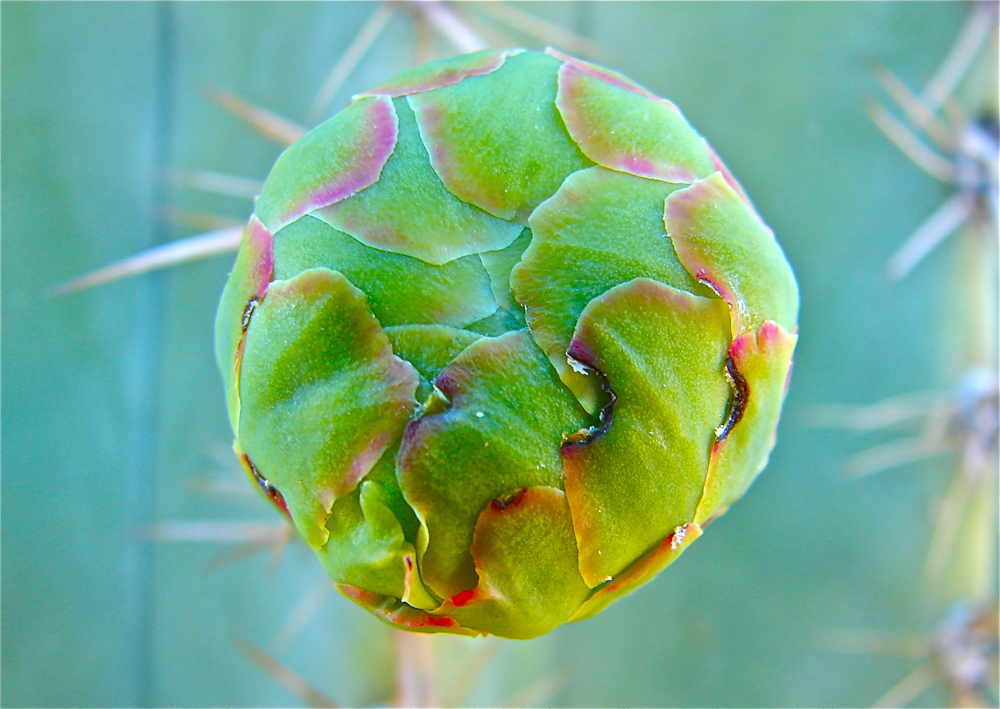
Sometime between 50 to 60 years of age, the first flower buds will begin to appear from the areolas of the saguaro. The first bud will appear on the southeastern sun exposure of the stem tip, but in a good flowering year, buds will encircle the entire crown of the stem and arms. From the first appearance of a bud to the opening of the flower requires a period of 10 to 14 days depending on elevation and temperature.
Longer Days Signal Changes

Saguaros bloom during the driest season of the Sonoran Desert. Warming temperatures along with the lengthening hours of daylight seem to be the stimulus for bud development. Saguaros growing in the southern geographic range of the Sonoran Desert will bloom first and the blooming progression will then move northward. Also, saguaros found in lower elevations will flower before those growing in higher elevations.
Signs of Summer
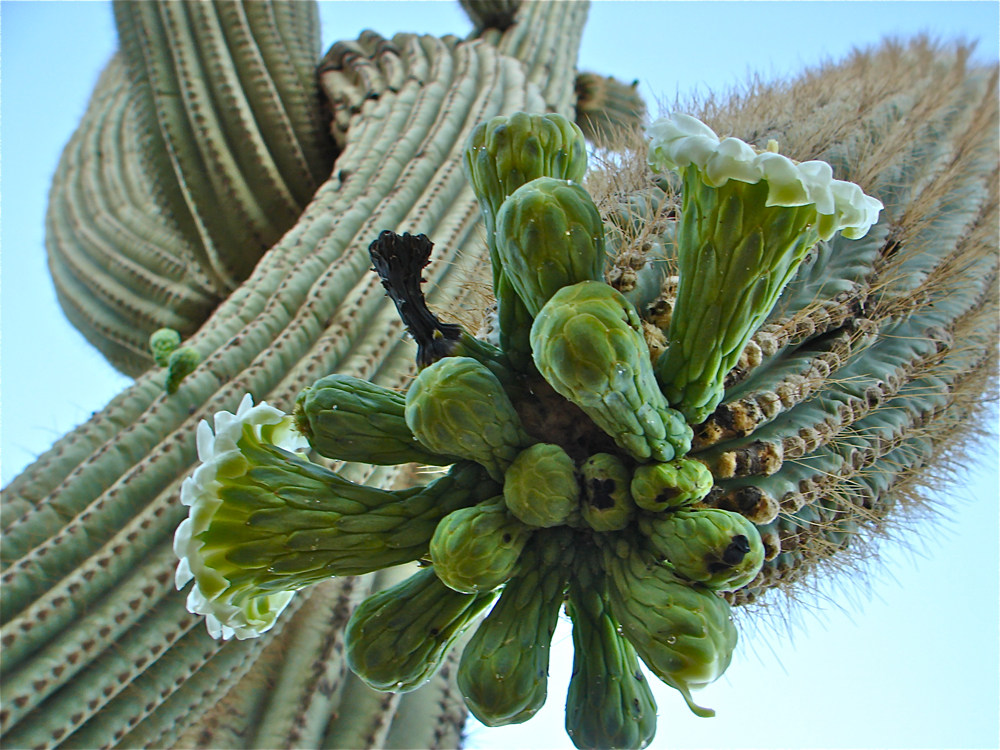
The trumpet-shaped, 3 to 5-inch-long (7.6 to 13 cm) flowers are a signal of the beginning of the desert's summer season. Since the majority of the blooming time is at night, nectar-feeding bats are a major pollinator of the saguaro's flowers, especially the lesser long-nosed bat. In fact, the flowering sequence of saguaros is timed to match the northern migration pattern of these common nocturnal desert mammals. New research has indicated that the amino acids found in the saguaro's pollen helps to stimulate and maintain lactation in the female bats.


